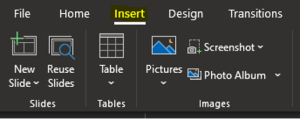Recovery Leadership Summit
Presentation Guidelines
Thank you again for agreeing to present at this year's Recovery Leadership Summit. Presentation guidelines have been created to assist all presenters for our Recovery Leadership Summit to prepare and finalize their presentations. Should you need any additional assistance, please email rls@facesandvoicesofrecovery.org. Please use “RLS Presentation Assistance” as the subject line.
Accessibility & Engagement
Accessibility Needs
Accessibility needs include visual and audio needs of conference attendees. Please:
- Use high-contrast colors
- Use a basic font (e.g. Arial, Verdana) that is at minimum in 24-font size
- Often, "less is more": strive to minimize your number of slides, as well as the text and visuals per slide
- Images, charts and text that are relevant to the curriculum should be summarized and described to the audience using more than color as an indicator
- Avoid animation
- Ensure that videos are captioned; provide a brief description of the video prior to playing it
- Faces & Voices of Recovery reserves the right to edit files to ensure accessibility.
Audience Engagement
The Summit's attendees are primarily key leaders and members of the Association of Recovery Community Organizations (ARCO), Substance Abuse and Mental Health Services Administration (SAMHSA) recovery grantees, Addiction Technology Transfer Center (ATTC) Network staff and Single State Agency (SSA) representatives. Best practices for engaging your audience can be found here.
Submitting Your Final Presentation
Upon submission of the Speaker Agreement you will receive an email with specific instructions on how to submit and due dates. Please follow the instructions provided via this communication, as well as, the following:
Movie Clips or Sound Files
If you have movie clips or sound files in the PowerPoint presentation, please embed them in the PowerPoint and submit them separately. This will help cover all potential technological challenges
To ensure a complete and effective presentation every time, here's what to do:
- Create a folder for your presentation and save your PowerPoint Presentation to this file.
- Drag and drop or copy every file (image, video clip, audio clip) that is used in the presentation in this folder. This will include all picture, movie, sound, and handout files that are used in the presentation.
- Re-create any links so that they access this presentation folder
- From the Ribbon menu, click the Insert tab

- Here you can select to insert a picture, video, and audio.

- Remember to click save again to resave the presentation.
- From the Ribbon menu, click the Insert tab
- To copy your presentation, you should now include this entire folder, complete with all files that it will access via the links. This will ensure your presentation is saved & viewed successfully and as intended.
- Another advantage of this approach is that you have access to the original files such as video clips etc. in the event of PowerPoint problems.
Language & Inclusivity
Faces & Voices of Recovery requests that presenters refrain from using terminology that may perpetuate stigma and discrimination. Please review the information below to aid you in developing curriculum that is non-discriminatory and inclusive.
| Use Positive, Person-first language: | Instead of: |
|---|---|
| Person with a substance use disorder | Addict or alcoholic |
| Physically dependent to or a person using “X” | Addicted to “X” |
| Person in recovery | Former addict, junkie, etc. |
| Substance Use | Drug/Substance Abuse or Misuse |
| Not actively using substances or in recovery | Clean or sober |
| Recurrence of use | Relapse |
| Multiple pathways of recovery | Multiple pathways to recovery |
| People who use drugs (PWUD) | Drug users |
